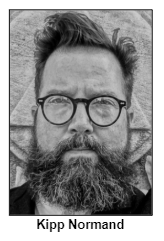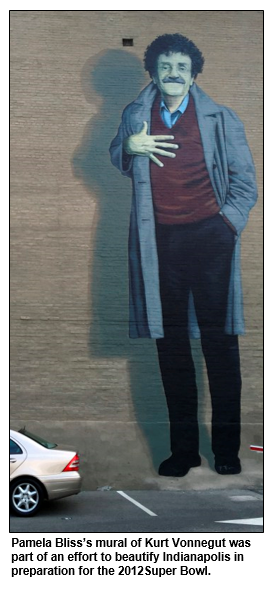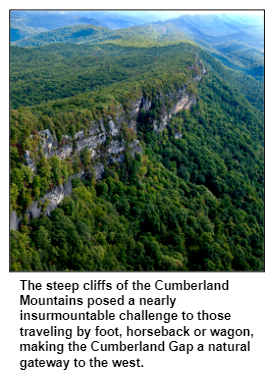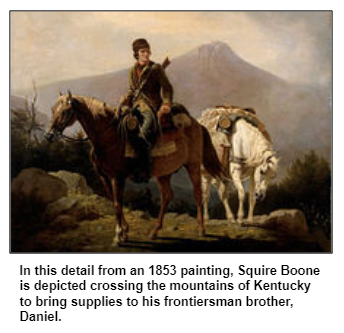Saturdays, noon to 1 p.m. ET on WICR 88.7 FM.
Or listen live from anywhere on WICR Online!
Our call-in number during the show: (317) 788-3314

November 24, 2018
Artwork inspired by Indy city history

"I thought, 'How marvelous . . . a city obsessed with speed,'" Kipp recalls.
Since moving to the Hoosier capital in 1990, he has delved into the city's history. Kipp also has become a well-known multimedia artist who, as he puts it, makes "box constructions, collage and assemblage using castoff materials and found objects." Much of the artwork is inspired by episodes in city history, ranging from the triumphant and colorful to the shameful.
To explain how Indy's history has inspired his artwork - and to share details about the heritage of his adopted hometown - Kipp will be Nelson's in-studio guest. His city history-inspired artwork recently was exhibited at the Harrison Center for the Arts, where Kipp has a studio. His artwork includes:
An image of Major Taylor, the Indianapolis native who became a superstar bicycle racer during the 1890s, on a box of breakfast cereal. The artwork inspires contemplation about endorsements and other commercial opportunities that were unavailable to Taylor (1878-1932), an African-American who encountered racial prejudice in his hometown and elsewhere. He died penniless in the charity ward of a Chicago hospital.
- A collage depicting White City Amusement Park, a spectacular but short-lived entertainment center in Broad Ripple during the early 1900s. The amusement park closed after a massive fire in 1908 that began in its Mystic Cave attraction. (Eventually, another entertainment center, Broad Ripple Amusement Park, opened on the site, lasting until the 1940s. It generated much less public excitement than White City.)
- And a collage of images about the dominance of the Ku Klux Klan during the 1920s in the city and state. Hoosier History Live explored the era - during which political leaders, including the governor and the Indianapolis mayor, were beholden to the Klan - on a show in 2010.
"I want to encourage you to become historians of this city," Kipp said to his artwork's viewers in an statement about his recent exhibit. He told Nuvo, the alternative newspaper: "This is an opportunity to tell the stories of Indianapolis. The familiar stories and those that ought to be familiar."
Roadtrip: Lafayette and its French connection

As Andrea explains, in 1825 Frenchman Marquis de Lafayette, last surviving general of the Revolutionary War, made a farewell tour across the United States.
Invited by the Indiana General Assembly in gratitude for his military service, Lafayette took a day trip to Indiana while visiting Louisville. He crossed the Ohio River to Jeffersonville, where he was "greeted on the Indiana shore by a salute of thrice 24 guns, discharged from three pieces of artillery stationed on the river bank," according to Baird’s History of Clark County.
Lafayette's visit inspired the naming of the town of Lafayette, county seat of Tippecanoe County, which was founded by William Digby during the general's tour.
Chicago-based sculptor Lorado Taft (who would later serve as a teacher and public lecturer at the School of the Art Institute of Chicago) was commissioned to memorialize Lafayette in marble on the grounds of the courthouse in Tippecanoe County. He holds a sword next to his heart in his right hand and has a cape draped over his left arm.
Intrepid Roadtrippers can visit Lafayette themselves to check out the statue. And to learn more about the town's history, be sure to listen to Andrea's report!
History Mystery

She is known for her outdoor artwork depicting famous Hoosiers, including murals of Kurt Vonnegut on Massachusetts Avenue in downtown Indy, Hoagy Carmichael In Richmond and Wendell Willkie in Rushville.
Pamela's new mural depicts a former pro athlete with deep Indiana connections. The painting rises up six stories on the side of a building at E. Michigan and N. Delaware streets.
According to a recent Fox59 report, Pamela has said that a dedication of the mural is planned for next year so that the former athlete it portrays can see the mural in-person and celebrate with Hoosiers.
Question: Who is the former athlete?
Hint: Although retired from playing sports professionally, the subject of the new mural remains in the public eye as a TV commentator for the sport that made him nationally famous.
Please do not call in to the show until you hear Nelson pose the question on the air, and please do not try to win if you have won any other prize on WICR during the last two months.
You must be willing to give your first name to our engineer, you must answer the question correctly on the air and you must be willing to give your mailing address to our engineer so we can mail the prize pack to you.
The prizes this week are a gift certificate to Calvin Fletcher's Coffee Company in Fountain Square, courtesy of Calvin Fletcher's, and four tickets to the Indiana History Center, courtesy of the Indiana Historical Society.
People are talking about Hoosier History Live!
"Hoosier History really is 'Live'--and 'Lively' as well. The program brings to new audience the delight and wisdom that comes with knowing more of our past and our connections as Hoosiers."
James H. Madison
Emeritus History Professor
Indiana University
Prizes sought for History Mystery
Want to reach thousands of sophisticated, intelligent Hoosier History Live listeners?
If your business or organization would like to contribute prizes for our History Mystery question, please email molly@hoosierhistorylive.org or give her a call at (317) 927-9101.
We love prizes that can easily fit in a business envelope, such as tickets or vouchers. Your business or organization gets a mention on the air by our host, as well as a mention and link in this newsletter and on our website.
Nelson Price, host and historian
Molly Head, producer/project manager, (317) 927-9101
Michael Armbruster, associate producer
Cheryl Lamb, administrative manager
Richard Sullivan, senior tech consultant
Pam Fraizer, graphic designer
Garry Chilluffo, special events consultant
Please tell our sponsors that you appreciate their support!

 Acknowledgments to Monomedia, Visit Indy, WICR-FM, Fraizer Designs, Heritage Photo & Research Services, Henri Pensis, Chris Shoulders, Aaron Duvall, and many other individuals and organizations. We are an independently produced program and are self-supporting through organizational sponsorship, and by individual contribution at the yellow button on our newsletter or website. For organizational sponsorship, which includes logos, links, and credits in the show, contact Molly Head at (317) 927-9101 or email her at molly@hoosierhistorylive.org. And any of our podcasts can be sponsored for a nominal fee.
Acknowledgments to Monomedia, Visit Indy, WICR-FM, Fraizer Designs, Heritage Photo & Research Services, Henri Pensis, Chris Shoulders, Aaron Duvall, and many other individuals and organizations. We are an independently produced program and are self-supporting through organizational sponsorship, and by individual contribution at the yellow button on our newsletter or website. For organizational sponsorship, which includes logos, links, and credits in the show, contact Molly Head at (317) 927-9101 or email her at molly@hoosierhistorylive.org. And any of our podcasts can be sponsored for a nominal fee.
Thank you!
We'd like to thank the following recent, new and renewal contributors whose donations help make this show possible!
- Kathleen Angelone
- Stacia Gorge
- Teresa Baer
- Linda Gugin and Jim St. Clair
- Tom and Linda Castaldi
- Jinsie Bingham
- James H. Madison
December 1, 2018 - coming up
Cumberland Gap and Hoosier pioneers


More than you might expect! But to understand the connection, a little geographical history is needed.
The Cumberland Gap is a pass in the Cumberland Mountains in far-southeastern Kentucky that many early pioneers of European heritage used to reach the wilderness territory that would later be known as Indiana, where they established settlements on the frontier. For many decades before Europeans' arrival, Native Americans also had been using the narrow passageway through the mountain range, which otherwise posed a nearly insurmountable challenge to those traveling by foot, horseback or wagon.
In the spirit of the early adventurers, our show will explore a range of aspects related to the Cumberland Gap - also known as the Cumberland Pass - and the travelers who came through it. Our guide will be Nelson's studio guest, Ron Morris, a history professor at Ball State University. An avid hiker, Ron has visited the gap several times and researched the history associated with those who used it as a gateway to what was then called "the West," including the frontier lands that became the state of Indiana.

Many of the early settlers who traveled through the Cumberland Gap were of Scotch-Irish heritage, Ron says. They are people who came (or whose ancestors came) from Scotland to northern Ireland, including the Ulster area, before they crossed the Atlantic to settle in the Carolinas, Pennsylvania, Virginia and other eastern parts of what eventually became the United States.
Among those who used the Cumberland Gap to explore the west was Kentucky frontiersman and folk hero Daniel Boone (1734-1820). His younger brother, Squire Boone (1744-1815), spent the final years of his life in far-southeastern Indiana; he is buried in a cave that bears his name in Harrison County.
Our guest Ron Morris lives in the far-eastern Indiana town of Centerville in a historic home on the Old National Road (now U.S. 40). He has been a Hoosier History Live guest several times, most recently for a show in 2017 about Indiana State Forests.
© 2018 Hoosier History Live. All rights reserved.
|




